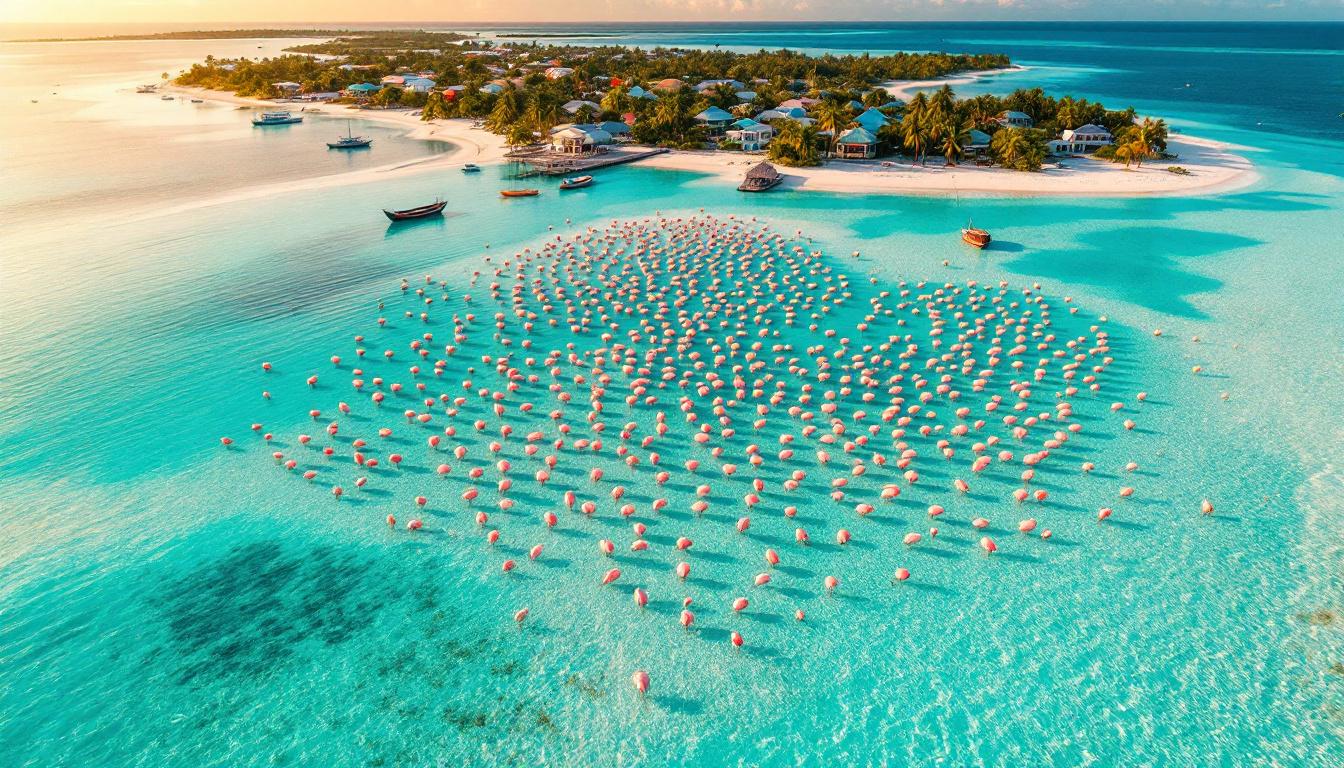Missing my Tulum ferry turned out to be the best mistake I ever made in Mexico. Standing at Cancún’s chaotic terminal, watching my connection disappear, I had two choices: wait six hours or take a chance on a local’s suggestion to visit “the real Yucatán.”
That spontaneous decision led me to Isla Holbox, a car-free paradise where I discovered what the Riviera Maya used to be before mass tourism arrived. The moment I stepped off that small ferry from Chiquilá, I knew this accidental detour would change how I see Mexico forever.
Three years later, I still dream about swimming alongside 30-foot whale sharks in crystal-clear Caribbean waters, sharing authentic lobster tacos with fishing families, and witnessing bioluminescent plankton transform night waters into liquid starlight.
The accidental discovery that changed everything
How a missed connection revealed Mexico’s best-kept secret
That frustrated afternoon in Cancún, a weathered taxi driver named Carlos noticed my Tulum disappointment. “Forget those crowds,” he said in broken English. “Real Mexico is two hours north.” His suggestion to visit Holbox (pronounced “HOL-bosh”) seemed like desperation talking, but desperation breeds the best adventures.
The ferry ride that shifts your entire perspective
The 30-minute ferry crossing from Chiquilá feels like traveling back in time. Shallow turquoise lagoons stretch endlessly, populated by hundreds of pink flamingos and white pelicans. This isn’t just transportation—it’s your first glimpse into an ecosystem that mass tourism hasn’t discovered yet.
What I found that guidebooks never mention
A fishing village where cars are actually banned
Holbox’s 2,000 residents chose to ban vehicles decades ago to preserve their island’s soul. Golf carts and bicycles navigate sandy streets lined with colorful Caribbean houses, while local fishermen still leave at dawn exactly as their grandfathers did. This isn’t a theme park version of authentic Mexico—it’s the real thing.
The world’s most affordable whale shark encounters
From June to September, Holbox becomes Mexico’s whale shark capital. Local operators like Willy’s Tours charge just $150 USD compared to Tulum’s $200+ prices, yet offer more intimate experiences with groups limited to eight people. Swimming beside these gentle giants in their natural habitat creates memories that no resort pool ever could.
The transformation that surprised me most
From Instagram hunter to conservation advocate
I arrived seeking the perfect shot for social media but left understanding why locals call their home “nuestra maravilla” (our wonder). Witnessing strict whale shark protection protocols—no touching, no feeding, respectful distances—showed me tourism done right. These aren’t photo opportunities; they’re sacred encounters with nature’s largest fish.
Discovering Mexico’s most sustainable island community
Holbox’s 2025 eco-certification programs fund solar panels, waste reduction, and marine conservation. Staying at family-run hotels like Punta Caliza means your $40 nightly rate directly supports local sustainability initiatives rather than international hotel chains. Every peso spent here protects the paradise you’re experiencing.
Why I’ll never travel the same way again
The $30 daily budget that rivals luxury experiences
My Holbox days cost 60% less than Tulum while delivering richer experiences. Fresh lobster dinners at beachside palapas ($12), bicycle rentals ($5), and spectacular sunsets (free) prove that authentic luxury isn’t about thread counts—it’s about genuine connection with place and people.
The community that teaches responsible travel
Holbox residents don’t just tolerate tourism; they’ve mastered sustainable hospitality. Local guides share traditional fishing techniques, women’s cooperatives sell handmade crafts, and evening conversations with families reveal the real Yucatán beyond tourist stereotypes. This is travel as cultural exchange, not consumption.
Planning your own accidental discovery
When to visit for optimal whale shark season
Peak season runs May 15-September 17, with July offering the most reliable sightings. Book accommodations early, as Holbox’s limited infrastructure means availability disappears quickly during whale shark months.
How to support the community that protects this paradise
Choose locally-owned hotels, eat at family restaurants, and book tours with resident operators who employ local guides. Holbox’s magic survives because its people prioritize preservation over profit—honor that commitment through conscious travel choices.
That missed ferry taught me that sometimes the best destinations find you when you’re open to unexpected detours. Holbox isn’t just an alternative to Tulum’s crowds—it’s proof that authentic Mexico still exists for travelers willing to venture beyond the obvious. The real Yucatán is waiting, just two hours from where you think you want to be.
